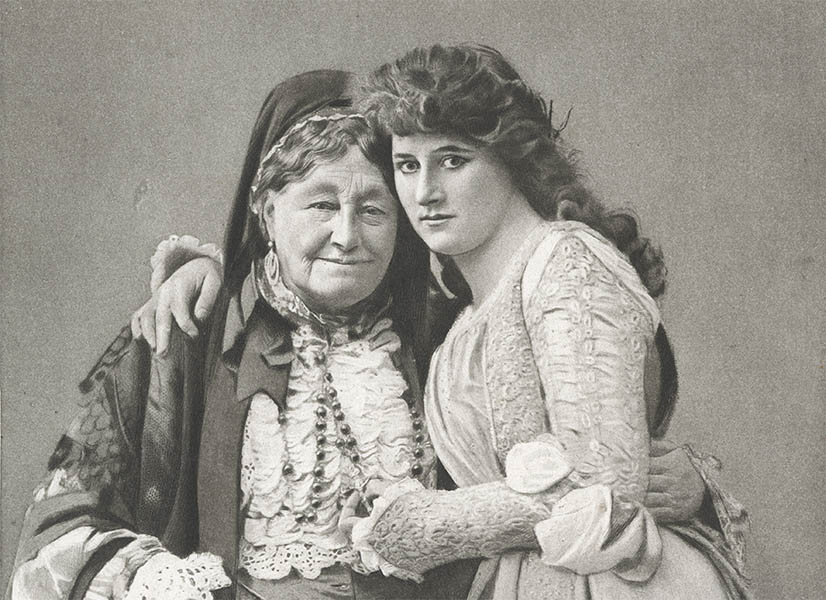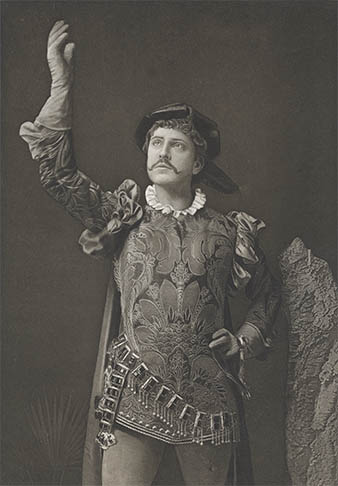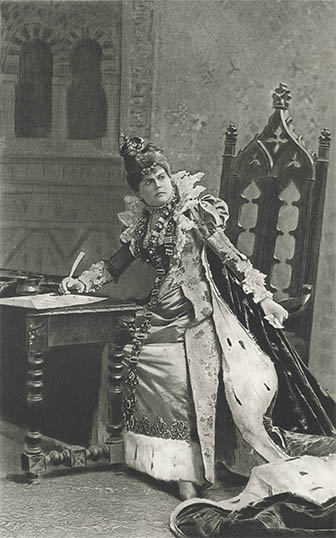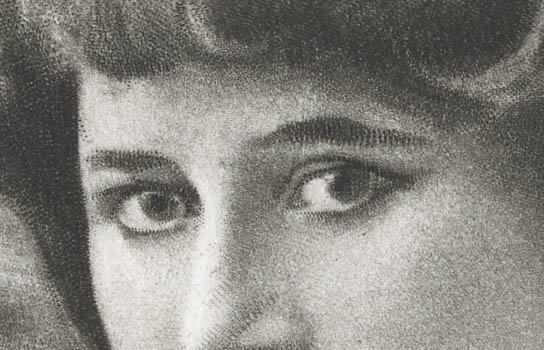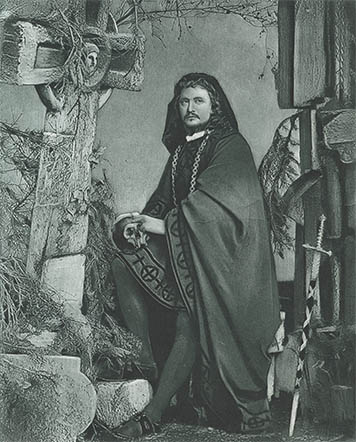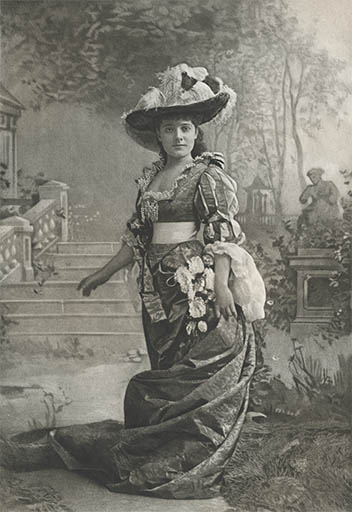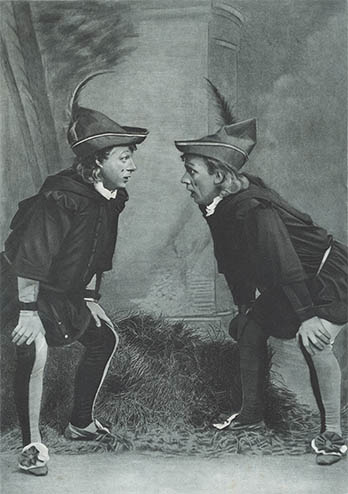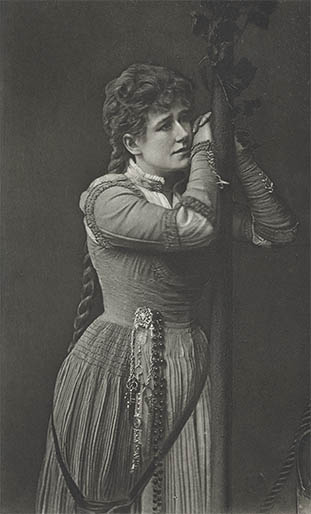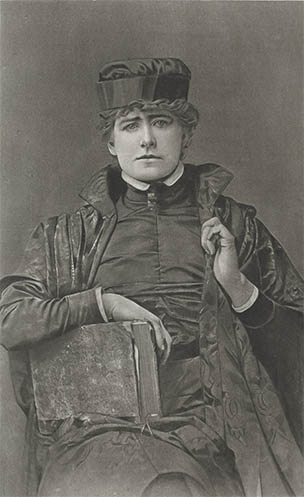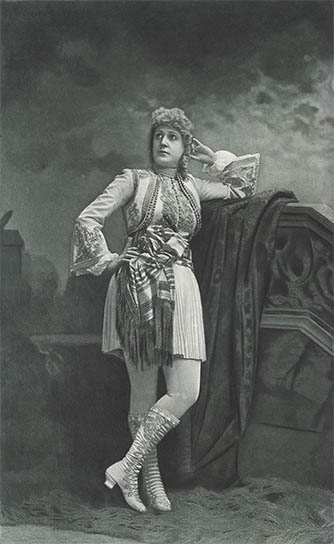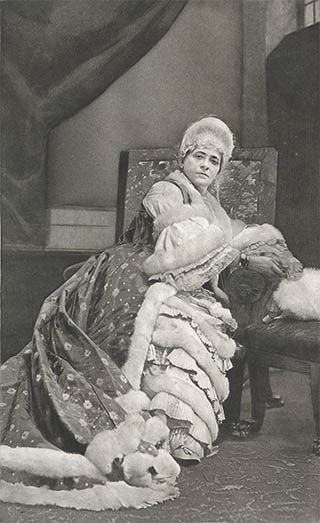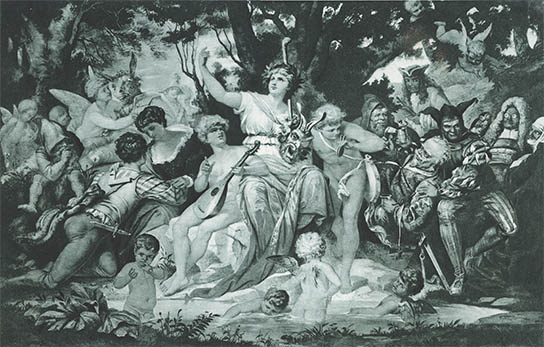113
The Stage and Its Stars
The Photogravure
This detail of a photogravure of the beautiful Mary Anderson1 and Mary Anne Sterling as Juliet and the Nurse from Romeo and Juliet, Act II, Scene IV was prepared by Gebbie & Co. in 1887 and published in Gebbie’s monumental The Stage and Its Stars.2
William Terris as Romeo
Mrs. D. P. Bowers as Queen Elizabeth
The history of the photogravure goes back the earliest days of photography. Joseph-Nicéphore Niépce was preparing plates for intaglio printing by exposing a sensitized pewter plate and a waxed engraving to sunlight even before his first heliograph. In 1852 William Henry Fox Talbot improved on Niépce’s method by using sensitized gelatin in place of bitumen and introducing a resin-powder screen. The final process was introduced by Czech artist and printer Karel Klíč in 1879. He improved on Talbot’s method by using polished copper plates, a fine aquatint grain and gelatin-coated carbon pigment paper positives.3
The so called Talbot-Klíč photogravure was labor-intensive and time-consuming but resulted in engraved plates with a nearly continuous tonal range and, as the name implies, a nearly photographic appearance. Initially Klíč licensed his process, but by the 1890s it was universally used for fine-art prints and books. Here is a detail showing the engraving technique:
George Gebbie, a lithographer, emigrated from Scotland in 1862 and eventually ended up in Philadelphia. In partnership with Frederick Keppel (1867), George Barrie (1873), and finally by himself (1880) he became the most important fine-art printer and publisher in Philadelphia. Gebbie extensively used the photogravure for both art prints and book illustrations.
Of Gebbie’s many editions The Stage and Its Stars, published in 1890, was certainly one of their more deluxe efforts. The book consisted of two oversized folios and included 112 full-plate photogravures and several hundred additional lithographs scattered throughout the text. As Gebbie writes in the prospectus:
“When the public receives the two magnificent volumes embellished with over one hundred character illustrations from steel photogravure plates, and over four hundred portraits of actors in the text, they will realize the fact that never before in connection with the literature of the Stage has such a costly and comprehensive work been attempted.”
Charles Fetcher as Hamlet
Edwin Booth as Hamlet
Julia Marlowe as Julia
Gebbie died unexpectedly in 1892 and his daughter Mary Elizabeth ran the business until she died in childbirth a year later at the age of 24. The business was then taken over by his son George who managed to bankrupt the company in 1907.4
Robson and Crane as the Two Dromios
Ellen Terry as Marguerite
Ellen Terry as Portia
Marie Wainwright as Viola
Madame Janauschek as Marie Antoinette
Ada Rehan and Miss Dreher as Mrs. Ford and Mistress Page
By the 20th century the photogravure became the process of choice for artistic photo reproduction and the related rotogravure, introduced in the 1930s, was used for magazine and newspaper reproduction. Both processes were eventually replaced by offset lithography.
Annie Pixley as M’Liss
Drop Curtain
1. Mary Antoinette Anderson de Navarro (28 Jul 1859 – 29 May 1940) debuted in the role of Juliet at the age of 16 and spent the next 14 years performing in America and Europe. One critic noted that her Juliet “has the charm that belongs to youth, beauty, and natural genius.” After collapsing during a performance in 1889 it was reported that “her nervous system partially gave way under the constant strain involved in her later work on the stage.” She shocked the theater community by retiring the next year at the age of 30.
2. Paul, Howard and Gebbie, George. The Stage and Its Stars Past and Present. A Gallery of Dramatic Illustration and Critical Biographies of Distinguished English and American Actors from the Time of Shakespeare Till To-day. Philadelphia: Gebbie & Co, 1890. The oversized (12⅙ × 17⅙") folio consisted of two volumes. Vol 1: 104 pages of text and 56 full plate photogravures. Vol 2: 114 pages and 56 photogravures. The scans here are from a mostly unbound, partially collated, but nearly complete special edition which was attractively packaged in an oversize garbage bag (i.e., a public library warehouse sale edition).
3. The Talbot-Klíč process goes something like this. A polished copper plate is dusted with rosin or asphaltum and a positive image contact print on potassium dichromate sensitized gelatin-coated paper is adhered to the plate. After exposing the plate to light it is soaked in water and the paper peeled away, leaving a gelatin resist on the plate. The plate is then acid etched with ferric chloride, washing away the unexposed gelatin, creating a plate suitable for inking and printing. If this sounds pretty straight forward, it’s not.
4. During the bankruptcy proceedings auditors discovered that George was using the company as a front to launder some 1.5 million USD of organized crime money. As you would imagine it was quite the scandal.
30 Jan 2012, updated 2 Feb 2012 ‧ Photography
